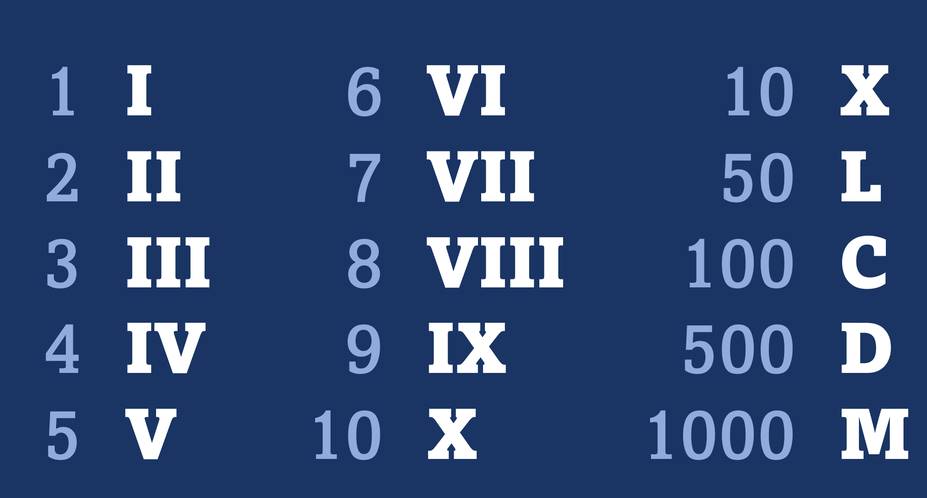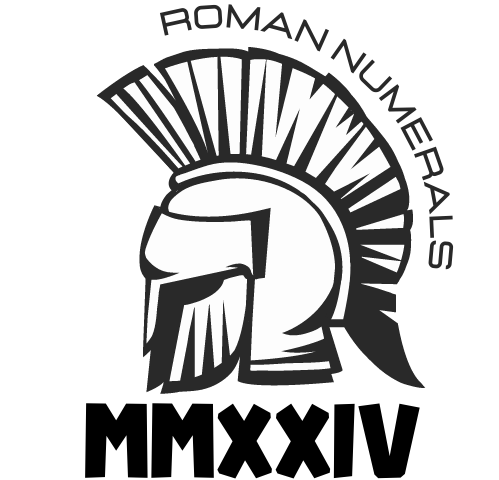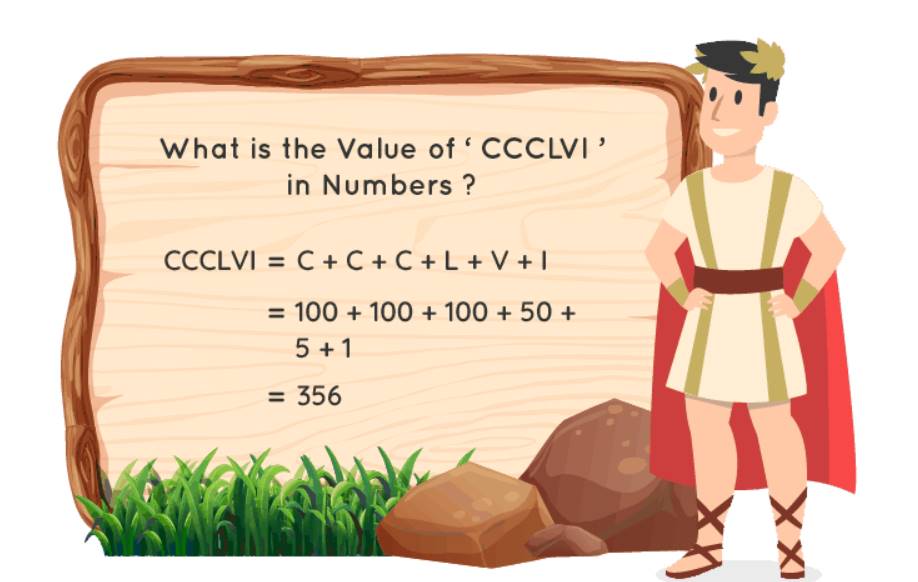Roman numerals chart: Hello historians and mathematicians! Today we are going to explore Roman numerals! We are taking a journey through history and mathematics to find out what Roman numerals are and what they were used for. So buckle up and let’s get started! 🚀
What are Roman Numerals?

Roman numerals are a number system that originated from ancient Rome. You know, the guys who built the Colosseum and had those amazing gladiator fights. Anyway, unlike our modern numbers, Roman numerals are represented using specific letters of the alphabet: I, V, X, L, C, D, and M.
The Roman Numerals Chart
The Romans used seven letters to represent numbers:
Table of the Roman numerals from 1 to 9 – One to nine
| Modern Number | Roman Numeral |
|---|---|
| 1 | I |
| 2 | II |
| 3 | III |
| 4 | IV |
| 5 | V |
| 6 | VI |
| 7 | VII |
| 8 | VIII |
| 9 | IX |
Table of the Roman numerals from 10 to 1000 – Ten to one thousand
| Modern Number | Roman Numeral |
|---|---|
| 10 | X |
| 20 | XX |
| 30 | XXX |
| 40 | XL |
| 50 | L |
| 60 | LX |
| 70 | LXX |
| 80 | LXXX |
| 90 | XC |
| 100 | C |
| 200 | CC |
| 300 | CCC |
| 400 | CD |
| 500 | D |
| 600 | DC |
| 700 | DCC |
| 800 | DCCC |
| 900 | CM |
| 1000 | M |
Mental note
Remember, Roman numerals combine these basic principles to create more complex numbers. For example, XV is 15 (10 + 5), and LX is 60 (50 + 10). You’ve got this! 👍
Pretty simple, right? Well, there’s a bit more to it, but we’ll get to that soon.
Cracking the Roman Code: The Rules
While writing numbers in Roman numerals, there are a few rules to remember:
- Repeat a numeral up to three times.
- Place a smaller numeral in front of a larger one to subtract.
In addition, Roman numerals are read from left to right, and the order of the numerals indicates whether you add or subtract the numbers.
Roman Numeral Converter
Converting Roman numerals to our usual numbers (and vice versa) is kind of like being a code-breaker. A roman numeral converter helps in this translation. But guess what? You can learn to do it yourself! Let’s try to convert the Roman numeral XII:
- Split the Roman numeral into individual numerals: X, I, I.
- Convert each numeral into our numbers: 10, 1, 1.
- Add the numbers together: 10 + 1 + 1 = 12.
Voila! XII in Roman numerals is 12 in our numbers!
What were Roman Numerals Used for?
Back in the day, Roman numerals were used for everything, from trading to timekeeping. Today, we see them on clock faces, movie credits, and even Super Bowl titles!
Why Learn Roman Numerals Today?
Sure, we’re not in ancient Rome, but learning Roman numerals can be useful and fun! It sharpens your brain, makes you a whiz at puzzles, and hey, it could even impress your friends!
Practicing with Roman Numerals
Ready to give it a go? Try converting these Roman numerals into our numbers: XV, XX, IV, IX. (Hint: Remember the rules!)
Frequently Asked Questions
The main Roman numerals are I, V, X, L, C, D, and M, which represent 1, 5, 10, 50, 100, 500, and 1000, respectively.
While we don’t use them in everyday math, Roman numerals are still used in specific contexts like clocks, book chapters, and film credits for aesthetic or traditional reasons.
The largest number that can be written in Roman numerals under standard rules is 3,999 (MMMCMXCIX). However, by using an overline, larger numbers can be represented.
To quickly convert, you can use a Roman numeral converter online or follow our guide above to learn how to do it manually.
Yes, many schools still teach Roman numerals as part of their math or history curriculum, helping students understand historical texts, clocks, and more.
Testimonials
“This guide to Roman numerals is a lifesaver! I needed to learn them for a history project, and this made it so easy.” – Sarah, 14
“Learning Roman numerals felt like cracking a code. I had a lot of fun, and now I even write my age in Roman numerals.” – Tommy, 15
“I never thought Roman numerals would be this interesting! This blog post made learning about them entertaining and straightforward.” – Emma, 13
“At first, I thought Roman numerals were hard. But after reading this blog post, I got the hang of it! Now, I keep looking for them everywhere.” – Mason, 15
“I recommend this guide to anyone who wants to learn Roman numerals. It’s engaging and super easy to understand.” – Isabella, 14
Conclusion
So, there you have it! A trip into the world of Roman numerals! It’s fascinating to think that these symbols, invented thousands of years ago, are still a part of our lives today. And, hey, you’re now a part of the club who can understand and use them. How cool is that? 🎉
Remember, the world is full of exciting things to learn. Today it was Roman numerals, who knows what it could be tomorrow? Stay curious, and keep learning!
Bibliography:





